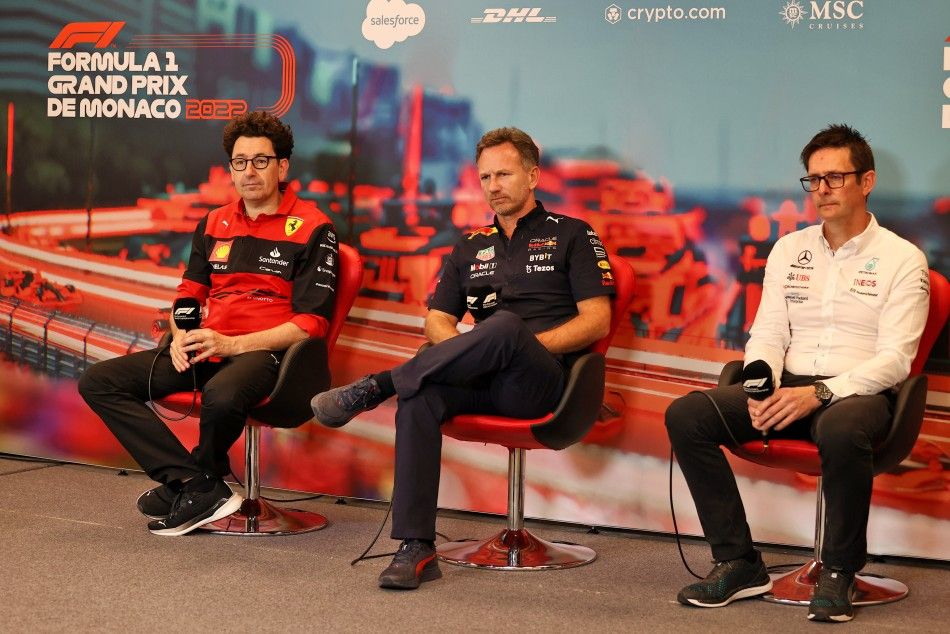F1 budget cap crisis continues to rear its head as the bigger teams ask for an increase in the maximum spending allowance, with rumblings of senior personnel caps materialising in the background.
The significant rise in inflation has increased the costs for each of the ten teams competing in F1, placing them under an almighty strain to adhere to the new $140million overall spending limit which is set to decrease further next year.
There’s a growing disparity between certain F1 teams at opposite ends of the grid as to how the championship should handle the financial difficulties that could not have been foreseen when the original cost cap figures were agreed. It has however united teams that are usually never seen uttering assurances with any form of unity to each other.
Ferrari, Red Bull and McLaren all agree that the figure needs to be reviewed as soon as possible to avoid forced redundancies of staff, in contrast to the likes of Alfa Romeo, Alpine and Haas who all oppose any form of binary rise in the cap’s number.
An idea floated by many in-and-around the F1 paddock for a while has been to set a cap or allowance for driver and key personnel salaries, who are currently excluded from the budget cap in place at the moment, instead of an overall budget cap rise. The team principals of Ferrari, Red Bull and McLaren had the opportunity to make their thoughts clear on the matter, with Mattia Binotto, Christian Horner and Andrew Shovlin each expressing differing opinions on a solution which they say is not at all straight-forward to implement.
“That’s a point we started discussing now a month ago together with all the teams, F1 and the FIA,” states Binotto. “We understand the importance to try somehow to cap the overall expenses. Obviously, there is not only the three top, let me say, key personnel in the team, there is not only the drivers, there is the engine and the power unit as well, for which there will be a budget cap in the future.
“So, I think that, again, we are discussing it, there is not a straight-forward solution, especially for the drivers’ caps on the salary, for drivers’ salary caps, but no doubt that we are discussing it and trying to understand what can be a solution. It will not be in the short term, the reason for that is we already have contracts in place, and we cannot simply breach them. There are legal implications, certainly to understand how to do that, so it’s a discussion. It’s an important one, we understand it and we recognise it will take time, but certainly we will go through the process.”
Horner followed up Binotto stating that the overall “principle” of a cap on senior personnel’s salaries, in which each F1 team boss would automatically fall into, is “well-merited” but “tricky” to apply. He expanded on how complicated such an idea would be to implement and points to the eye-watering costs associated with the technical side of the sport.
“I think there’s an awful lot of things that need tidying up within the existing cap that we have… but I think we need to go beyond that,” Horner explains. “And personally, I think, too much weight and pressure is being placed on the cap at the moment. I think you’ve got to look at where your cost drivers are and I think as Formula 1 we need to do a better job at looking at technical regulations and sporting regulations because we’re still designing and manufacturing very expensive cars. The engine regulations for 2026 – there’s nothing cheap about them, and I think this is what then puts an artificial pressure on the financial regulations.
“We’re going to end up with more people in our financial department than we have in the drawing office and that’s what we don’t want to see is that F1 becomes an accounting world championship, you know, rather than a technical or sporting one. And I think that we’ve just got to get that balance, right, and just look at revisiting some of the fundamentals of why does it cost so much to build these cars?”
Mercedes’ Shovlin suspects that any further caps in areas such as salaries need to be “workable” and that this type of cap is not something we should be focusing in on right now – on a similar wavelength to Ferrari and Red Bull.
“There’s no doubt that a well thought out cap can benefit the sport, and those are all areas that we’re looking at to be brought into it in the future and they’ve got to be workable,” said Shovlin. “But then if you look at the situation we’ve got right now, the chassis-side cap came in, and it isn’t… At the moment it’s very difficult to see how that’s going to be workable in the current climate so while they’re very useful topics and on the agendas for very good reason, it is the immediate problem that is the one.
“We need to prove that we can have a cap that works for the teams for the sport. And from my point of view, that would be the priority… The budget cap is an absolute must-have for F1, in order to take part in this sport in a financially sustainable way and in a way where you can also be competitive on the sporting side.”
Alfa Romeo’s Frederic Vasseur and Alpine’s Otmar Szafnauer also chimed in on the subject of key personnel salary caps, disagreeing with the ‘top’ F1 teams and agreeing amongst themselves that it is “the right approach to coordinate with the budget cap.” They concur that any changes should be brought in sooner rather than later to ultimately prevent any all-round budget cap increases – something the ‘smaller’ teams are firmly against.
“This will probably be the next topic on the table… We have to find something like this because it’s important for the sport,” Vasseur summed up. “You could overshoot the limit and you will have to take part of your budget cap, I don’t know, but we have to find something like this because it’s important for the sport. And I think at the end of the day it makes also sense for the competition. I’m more than pleased to go in this direction.”
Meanwhile, Szafnauer added: “Yeah, I think Fred’s right that that’s the next step. I’m in favour of adding that underneath a global cap so that the teams can trade off, you know, driver skill with updates because ultimately both things bring performance on track. I think for us to have the latitude to be able to trade that off is probably the right thing.
“Other sports have implemented this and we should take some learnings from them and take our time to make sure that it can be policed and we do stick to the cap when it does come in. But yeah, like we said, it should be a next step and we shouldn’t rush into it but make sure that, you know, we have good methods in place to be able to police it and also have it be a fair cap.”



















